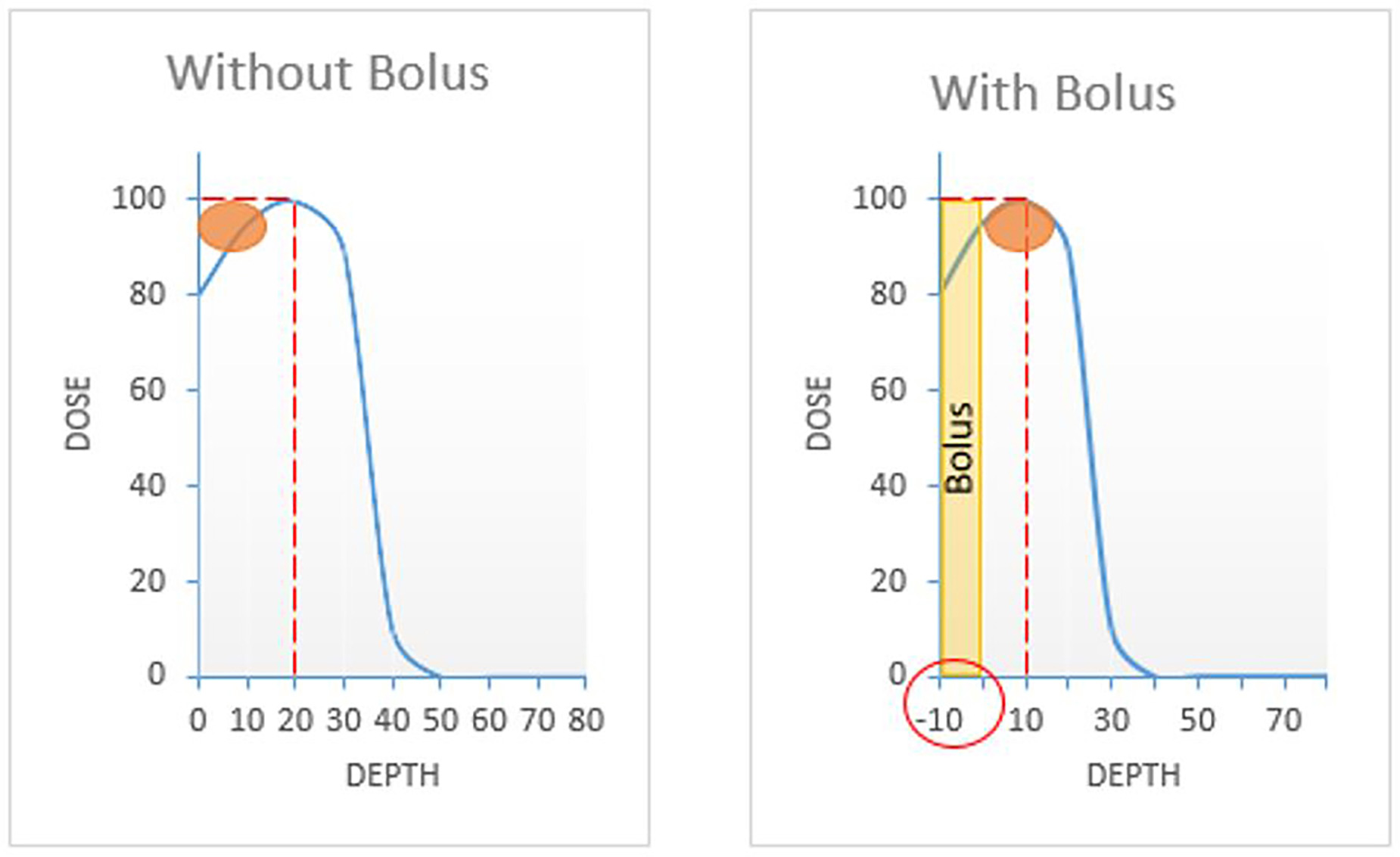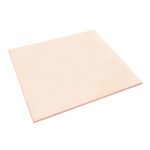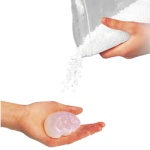- Description
- Specifications
A bolus material can be used to alter the depth of the maximum radiation dose (Dmax) during radiation therapy. It is a tissue-equivalent material, which means that it has similar properties to human tissue when it is irradiated.
During radiotherapy, the radiation dose usually “builds up” a couple of millimeters beneath the skin, instead of directly underneath it (the depth depends on the beam-energy). When treating conditions like skin cancer, you may want to alter the beam, so that the maximum dose can be located right underneath the skin, where it is most needed in this instance. The bolus material will serve as a “build-up material” and can help you to achieve just that.
The diagram below is an example for bolus use in Electron Beam Therapy. The orange region is the tumour, where you want the “build-up dose” to be deposited.

This Thermoplastic Bolus Material is a specially formulated rigid low melting temperature thermoplastic for bolus applications in radiation oncology applications. It is easy to mold and use, and can be stuck on the thermoplastic mask of the patient. It can also be stuck onto itself after heating to make thicker bolus sheets if needed.
This material is available in pre-cut sheets with a thickness of 2mm, 5mm and 10 mm, and in pellet form.
Place the Thermoplastic Bolus Material in a water bath at a temperature of 65°C (149 °F). This is the ideal softening temperature. Use a nylon mesh in the water bath to prevent the bolus material from sticking to the metal parts of the water bath.
|
Attenuation (± 0.15%)
|
Skin build-up (± 0.1 mm)
|
||
| 6 MV | 10 MV | 15 MV | mm H2O equivalence |
| 0.28% | 0.20% | 0.20% | 1.3/mm material |
How to use
Thermoplastic bolus sheets:
- Place the thermoplastic bolus sheet in a water bath at a minimum temperature of 65°C (149°F). Use a nylon mesh to prevent the bolus material from sticking to the metal parts of the water bath.
- Cut the sheet into the right shape:
- 2 mm (0.08″) sheets can be cut before or after heating.
- 5 mm (0.2″) and 1 cm (0.4″) sheets should be cut after heating. We recommend drying the remaining material on a flat surface so you can reuse it later on.
- The ideal heating time depends on the size and thickness of the sheet. When the bolus material is entirely transparent, you can take it out of the water bath.
- Position the bolus sheet on the mask and press gently so that it sticks, without altering the thickness. When positioning the bolus sheet directly onto the patient’s skin, use a paper sheet as a barrier to keep the material from sticking to the skin. Make sure that the sheet is not too hot before you apply it to the patient.
Thermoplastic bolus pellets:
- Place the thermoplastic bolus pellets in a cup of hot water and make sure that all the pellets stick together into a ball. Put this ball in a water bath at a minimum temperature of 65°C (149°F) to let it soften further. Always use a nylon mesh when heating bolus materials in a water bath.
- When the ball is entirely transparent, you can remove it from the water bath. Note that the pellets become transparent faster than the sheets.
- Mould the material into the desired shape and thickness and use as required.
Characteristics of Orfit thermoplastic bolus
- Variety of sizes and thicknesses: The thermoplastic bolus sheets are available in different sizes and thicknesses, so you can always get the desired result.
- Easy to mould: The material becomes flexible when heated, allowing you to easily follow the patient’s contours.
- Sticky material: Thanks to its sticky properties, the bolus can be moulded onto a mask and remain in the desired location. You can also stick multiple bolus sheets together in order to achieve the right thickness for your specific patient.
|
|
|||||||||||||||||||||||||||||||||||||||||


